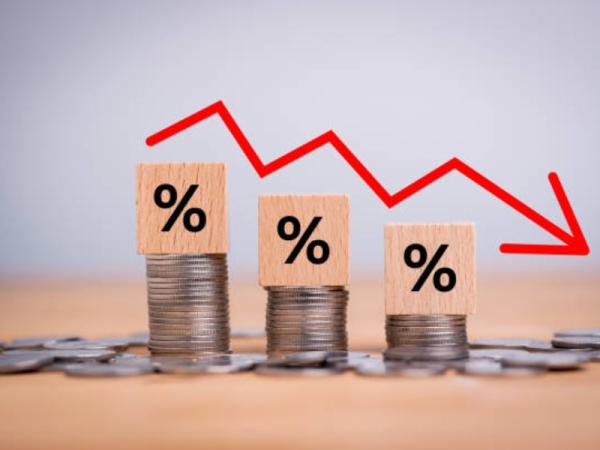The fight against inflation in Colombia seems to be won, according to recent reports from Dane and the downward trend that this indicator maintains despite pressures from areas such as public services, food and transportation costs. However, it is still far from peers such as Chile, Brazil, Mexico or Peru, which are at lower levels in Latin America.
This is reflected in a recent report by the economic research team from Corficolombiana, which also warns of some inflationary outbreaks that, although they are not a direct threat to the local market, must be closely monitored to avoid surprises in the future, since the behavior in this area is heterogeneous and there are current risks in the panorama.
More news: More than 100 flights have been cancelled due to fuel shortages in the country
According to these experts, the greatest threat to the cost of living has been seen in countries such as Brazil, Chile and Mexico, where pressures from food and energy, due to intense drought, have caused surprising increases in prices in recent months, a situation to which Colombia is not completely immune.
Annual review
First, the Corficolombiana team conducted a year-by-year review of the behavior of inflation, recalling that between 2021 and 2022 there was a synchronized increase in the indicator, reaching highs in two decades due to problems in global supply chains and geopolitical conflicts.
Inflation
iStock
After this, inflation began to slow down, driven by the correction of food and energy prices, and by restrictive monetary policies; which continues in Colombia, although at a slower pace than in the other countries reviewed for this exercise. He also said that inflationary variations usually take a little longer to occur here.
“The disinflation process in Colombia not only began later than in other countries, but was slower due to several factors such as the effects of the depreciation of the Colombian peso at the end of 2022 and beginning of 2023 on the prices of food and tradable goods; the persistence of the effects of the 2021 National Strike on some foods and gasoline price adjustments from the end of 2022 and throughout 2023,” they explained in their report.
You may be interested: ‘There is enough jet fuel to operate without problems for at least five days’: Ministry of Transport
Among the causes of this sustained and more pronounced increase than in the region, Corficolombiana highlights the boom in domestic consumption, which was stronger than in other countries and generated additional inflationary pressures.
“The initial inflationary surge was driven by external price shocks food and energy shortages, exacerbated by conflicts such as those in Russia and Ukraine,” they stressed, while emphasizing that “inflation in services has remained high due to indexation processes.”
“When services are indexed, their inflationary dynamics become highly inertial, which means that they are little sensitive to market or monetary policy factors. Their persistence is due to the effects of the second round of inflation. As the prices of the volatile components were corrected, services inflation – the component with the greatest weight in the CPI baskets in the countries analyzed, with 40.1% on average – increased and put upward pressure on total inflation,” they added.
Risks on the road
With all of the above mentioned, the Corficolombiana economic research team The Ministry of Finance set out to review whether there are risks in the medium and short term for the investment, taking into account the upcoming changes in issues such as the increase in the price of diesel and the intensity that a possible La Niña phenomenon could reach.

Inflation
Jaiver Nieto Alvarez / Portfolio
The disinflationary process faces risks in 2024, although most of them are transitory and should not threaten the normalization of monetary policy. In addition to pressures in the services sector, new pressures have emerged on food and energy prices, mainly due to temporary and transitory phenomena,” they said.
They also asked to take into account that prices have been affected by climatic phenomena such as “El Niño”, in addition to extreme droughts in Mexico – which have led the country to its worst water crisis in three years – and floods in Rio Grande do Sul, the main agricultural region in southern Brazil; which In general terms, this has been reflected in considerable increases in food and services.
Read here: At risk, 11 road concession contracts that could be terminated early
“Core inflation, which excludes food and energy, had been on a downward trend during the first half of the year in the countries analysed (Chart 6). However, in July it registered a surprising increase in Chile and Brazil. Despite this upturn, it is still premature to conclude that we are seeing a resurgence of demand-driven inflationary pressures,” the report says.
Thus, they conclude that the inflationary resurgence that has been observed in recent years months responds to volatile and cyclical factors rather than to demand shocks that may affect the long-term trajectory of inflation.
What’s next for Colombia?
Corficolombiana concluded by projecting that, although a resurgence of inflation is not expected for Colombia this year, it cannot be overlooked that it has a higher inflation rate than the rest of the countries in the region, 6.9% vs. 4.3%, which has made it difficult to anchor inflationary expectations and has motivated a cautious stance by the majority of the Board of Directors of the Bank of the Republic.
In this sense, they stated that the inflation cycle in Colombia It is lagging behind its peers in the region, and the downward adjustment is expected to continue in the coming months; although it warns that this is an issue that must be closely monitored to be alert to any unexpected changes.

Inflation
iStock
Finally, for Corficolombiana it is important to consider the external shocks that can uniformly affect the region. “In particular, it will be relevant to follow the position of the Federal Reserve at its next meeting. Last week, its president, Jerome Powell, suggested a possible rate reduction in the coming weeks, which could have a significant impact on international markets, including those in Latin America,” they concluded.
Although interest rates are expected to continue to fall in upcoming meetings of the Bank of the Republic, we must not forget that the cost of living data that will be known in the coming weeks will be important in determining the speed of reduction and whether there will ultimately be a pronounced easing of monetary policy.
















